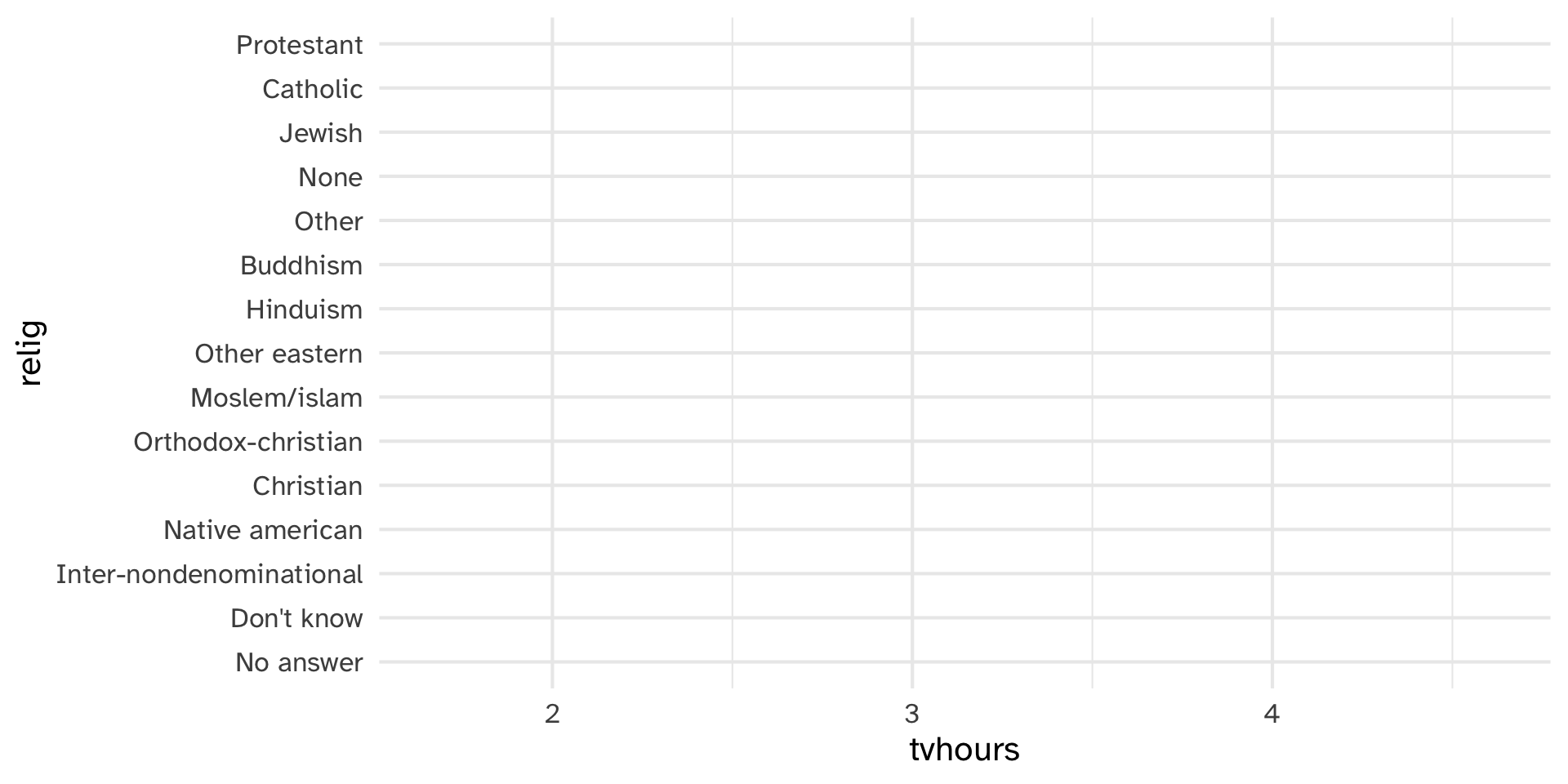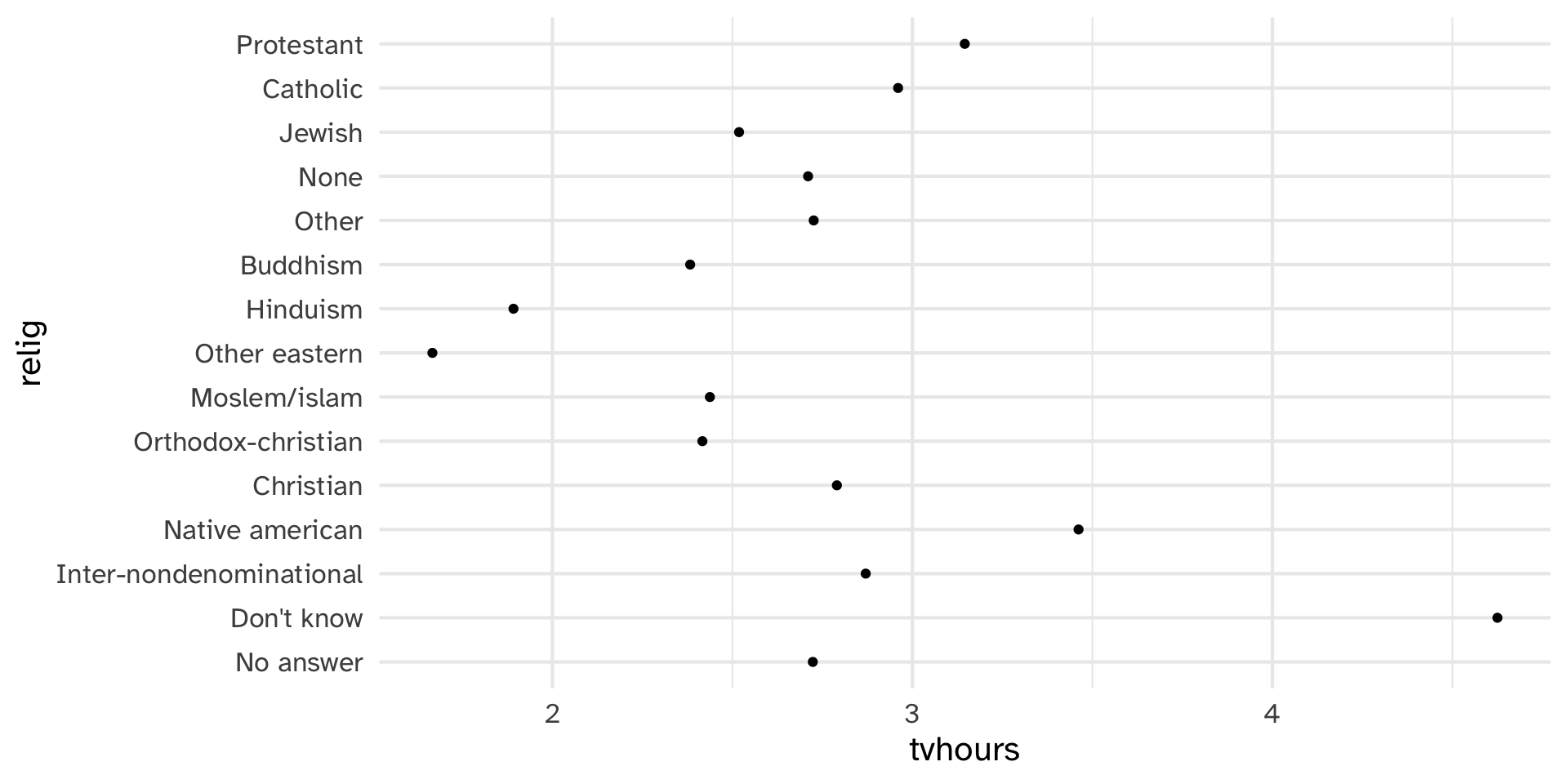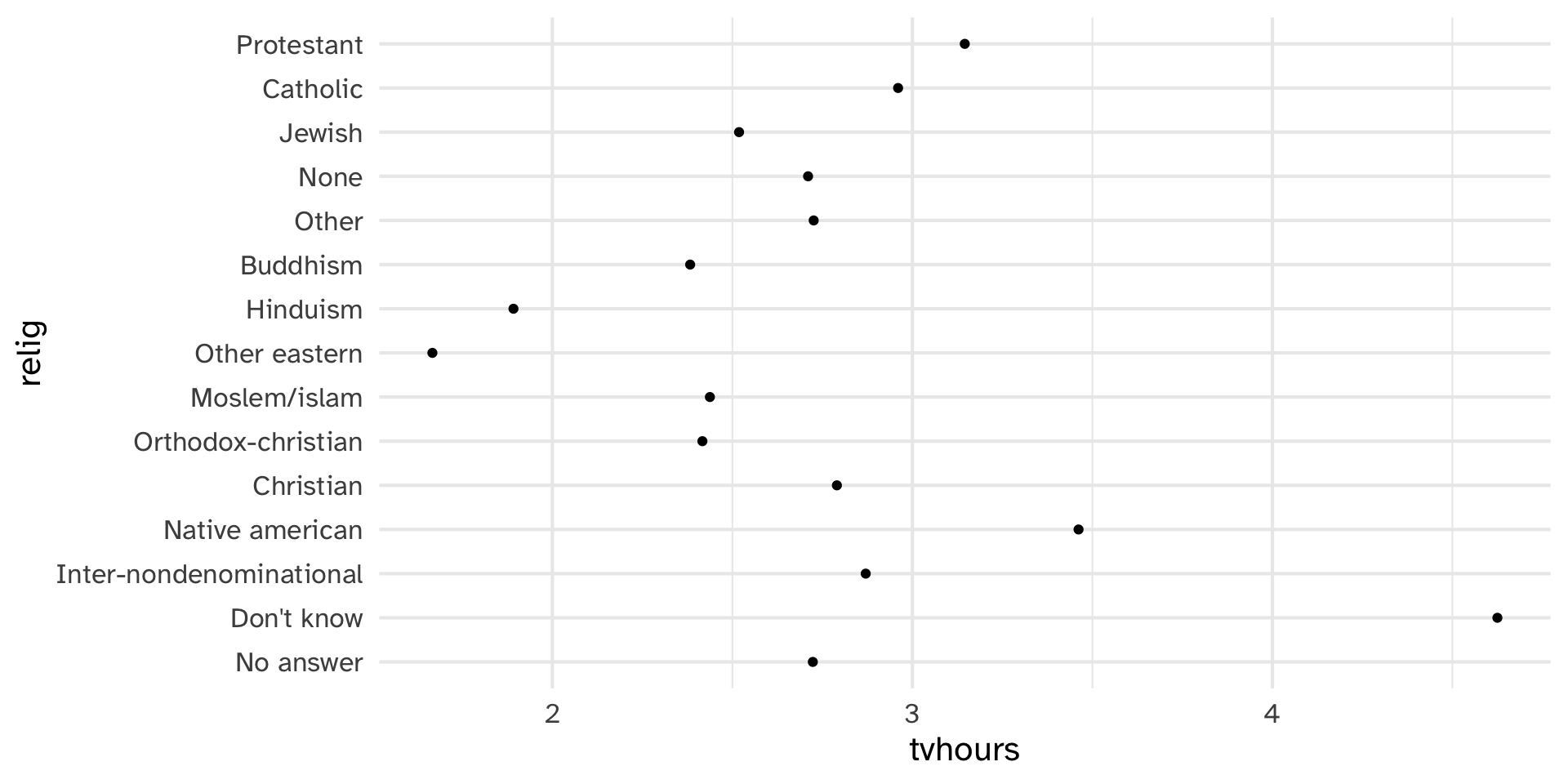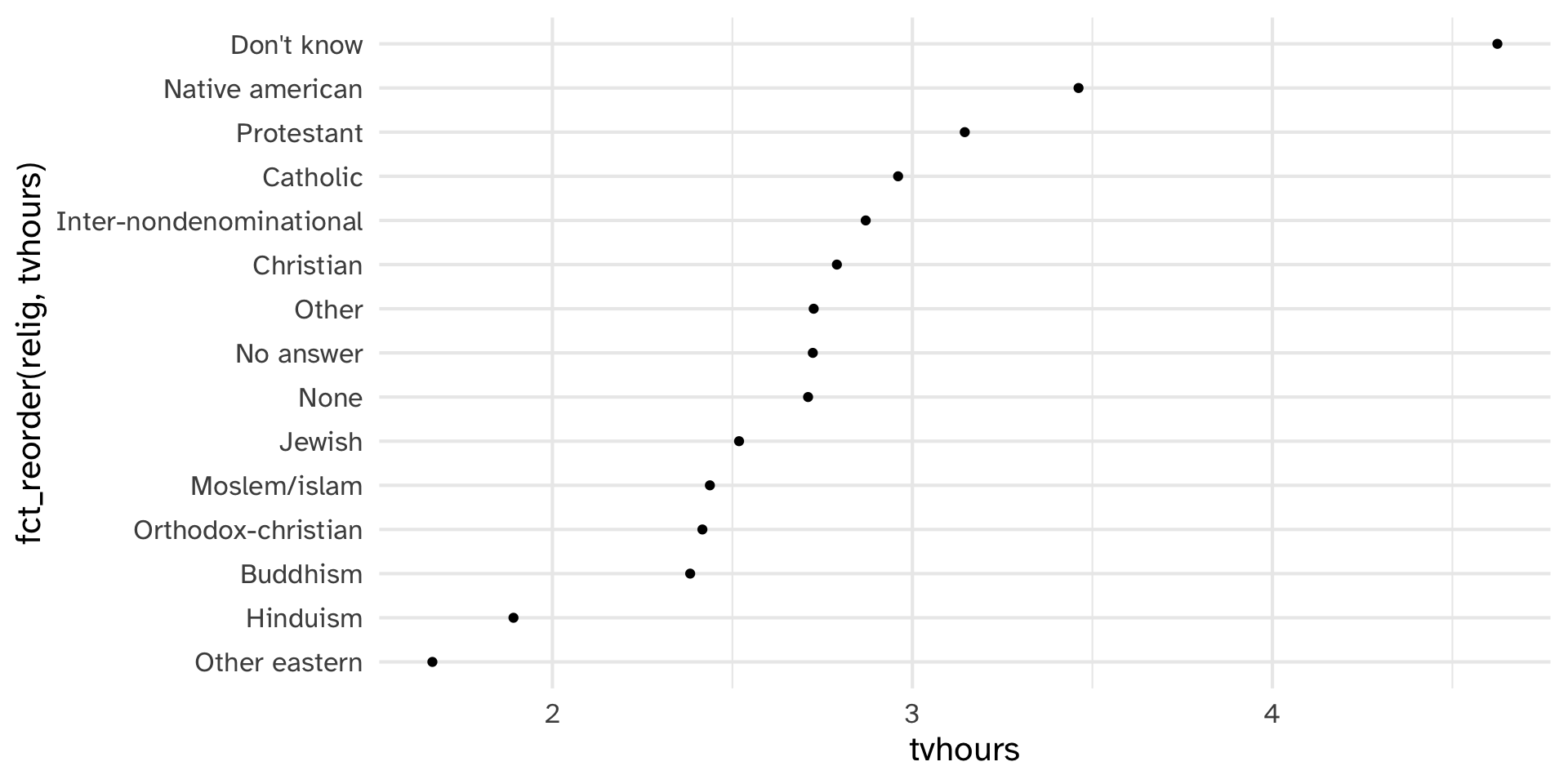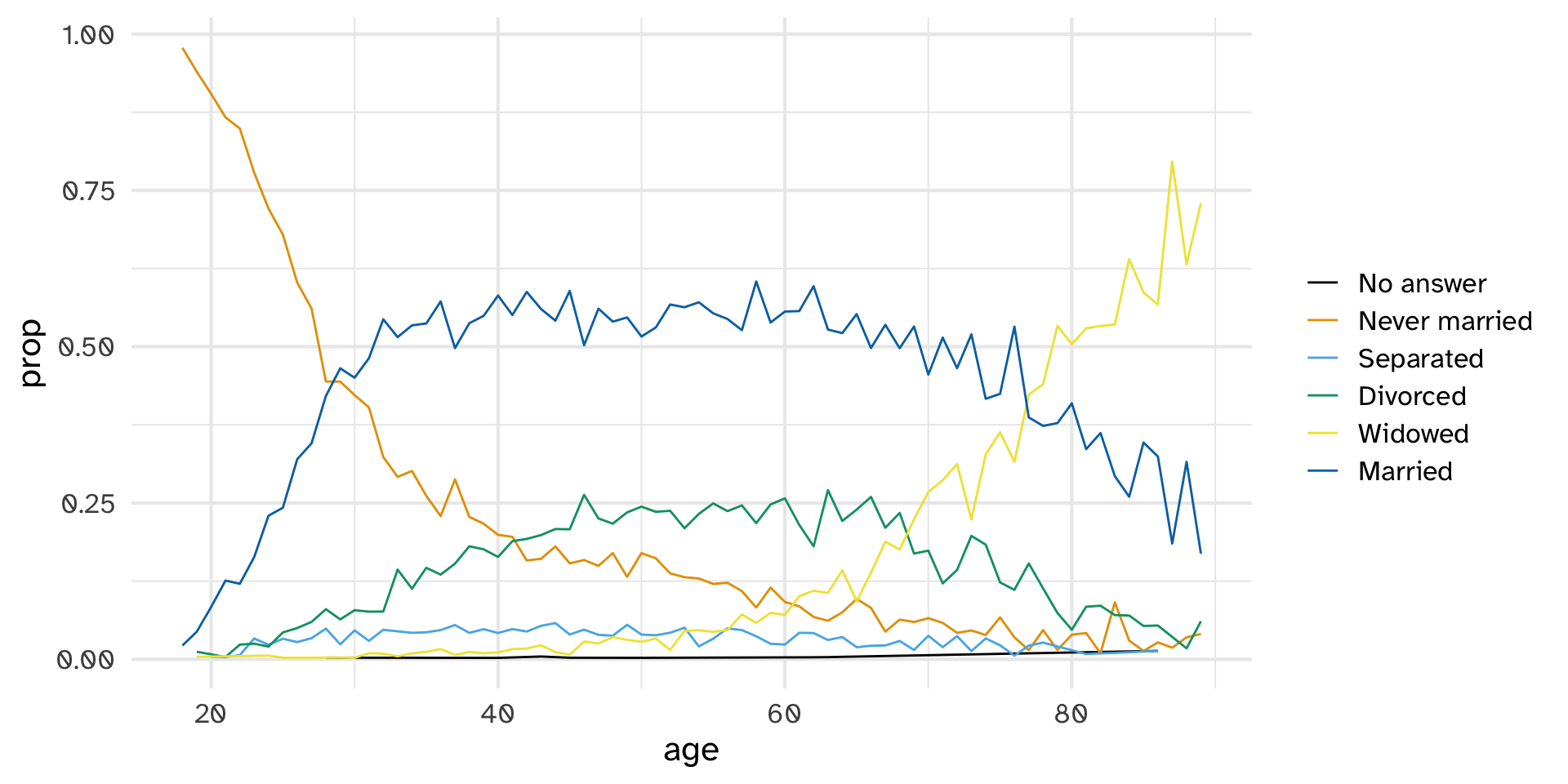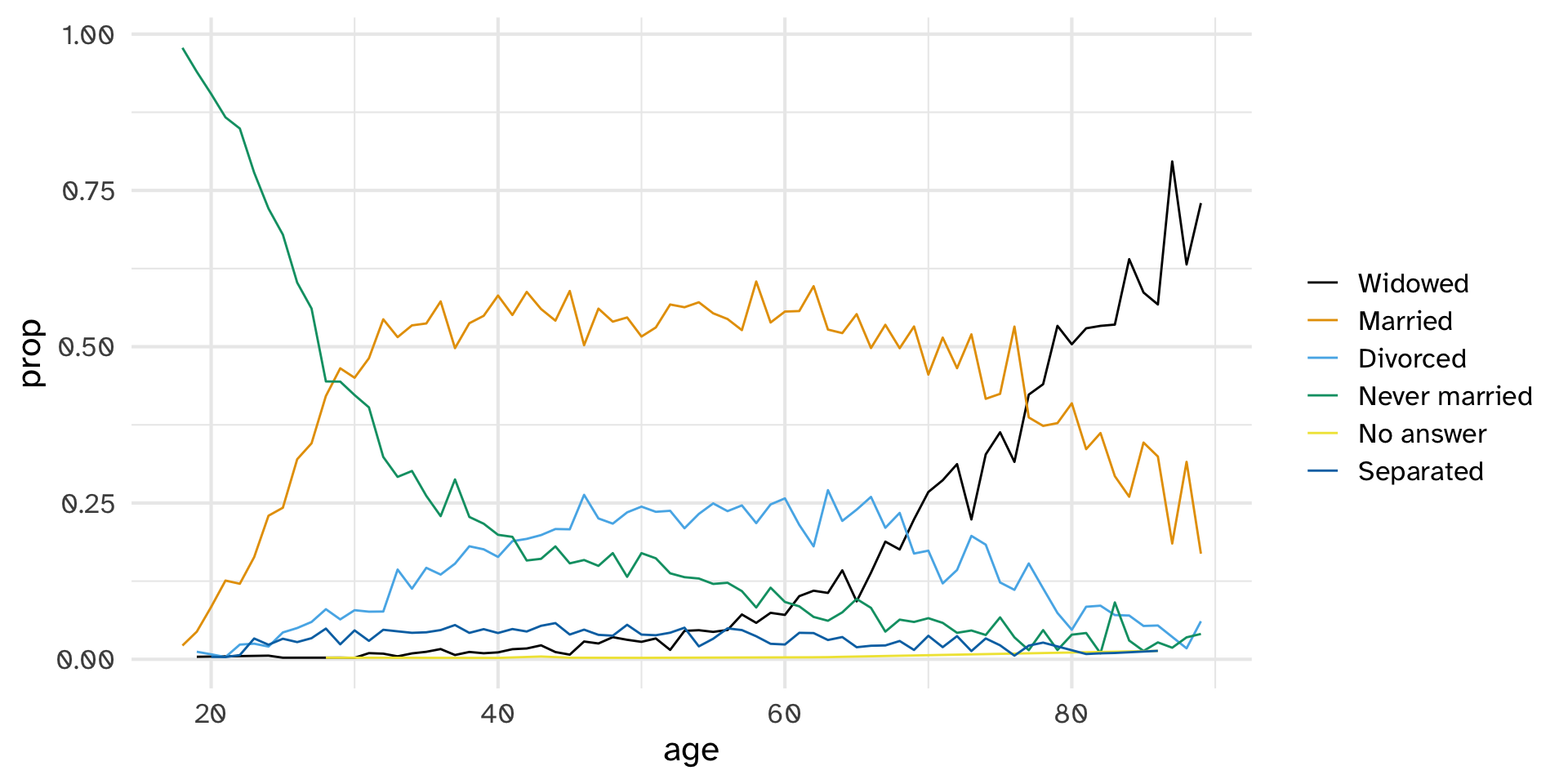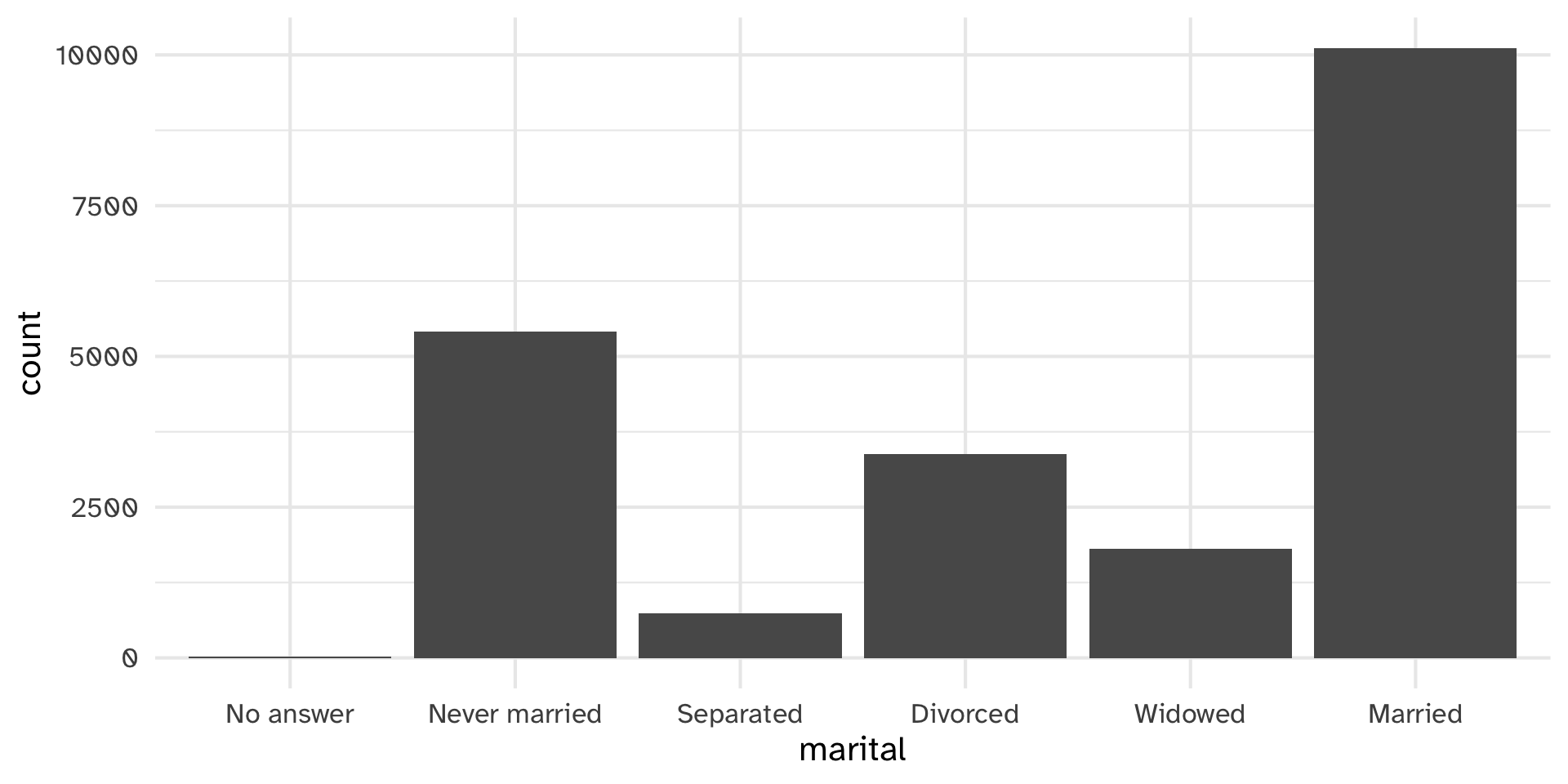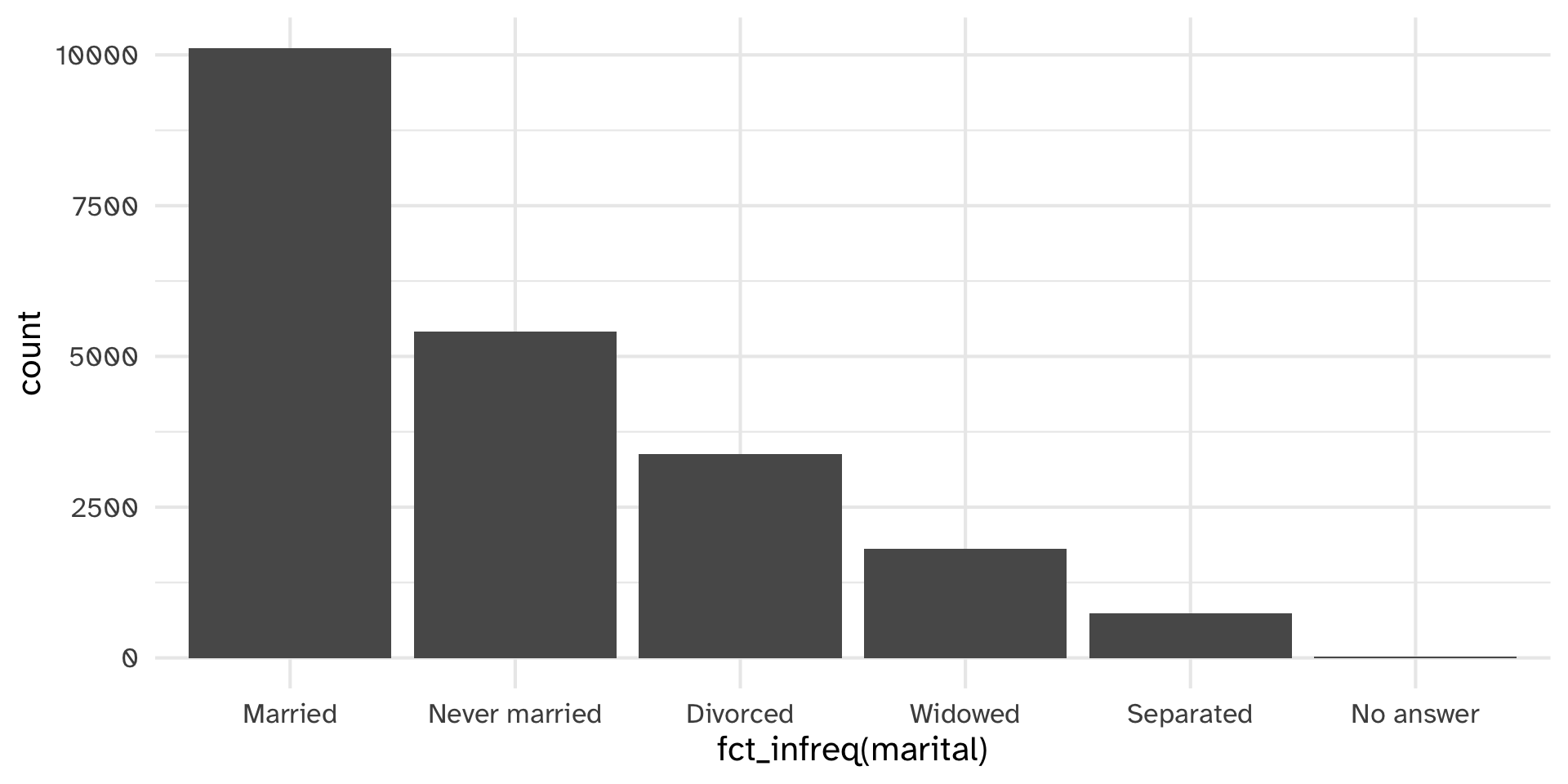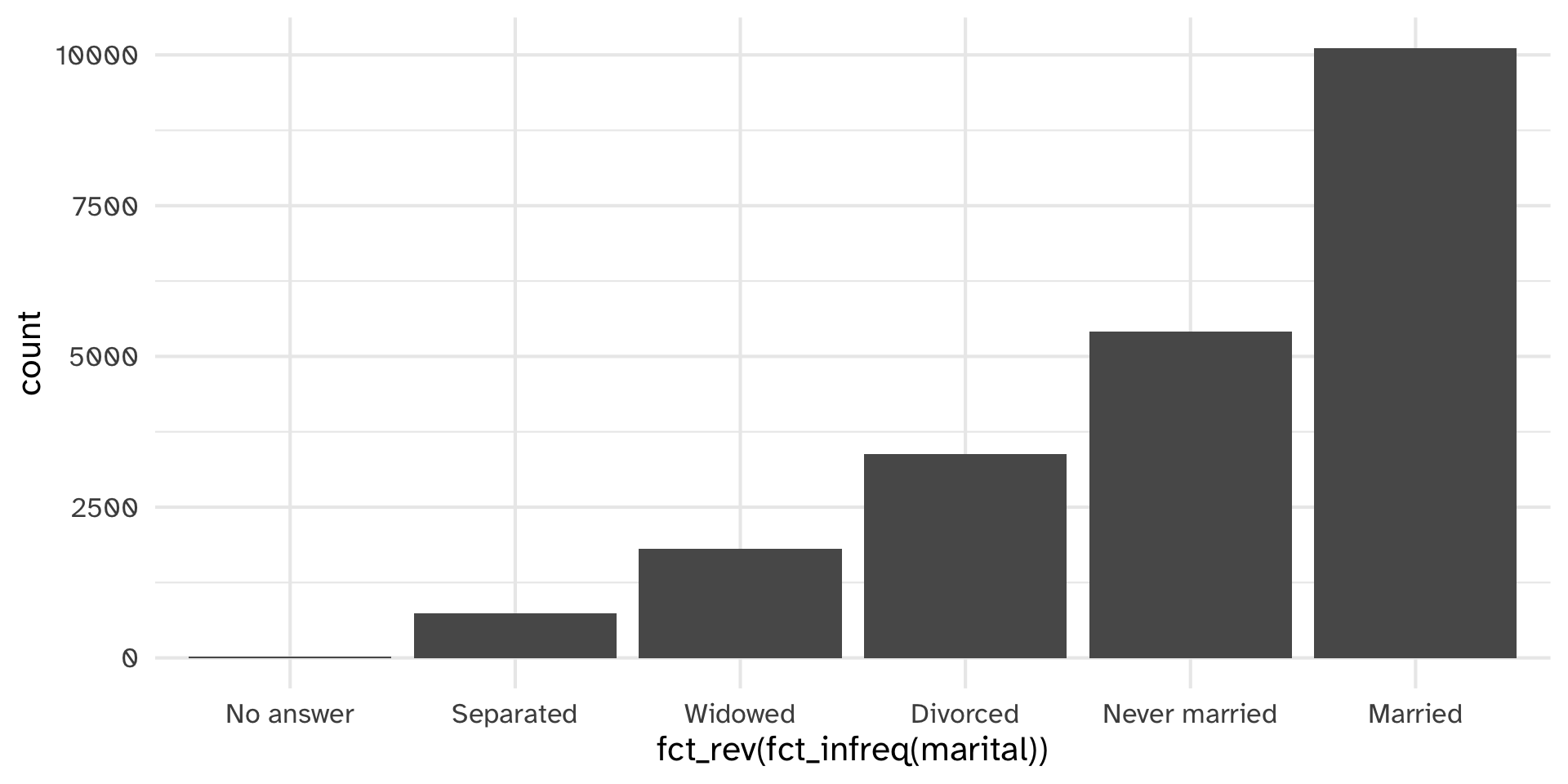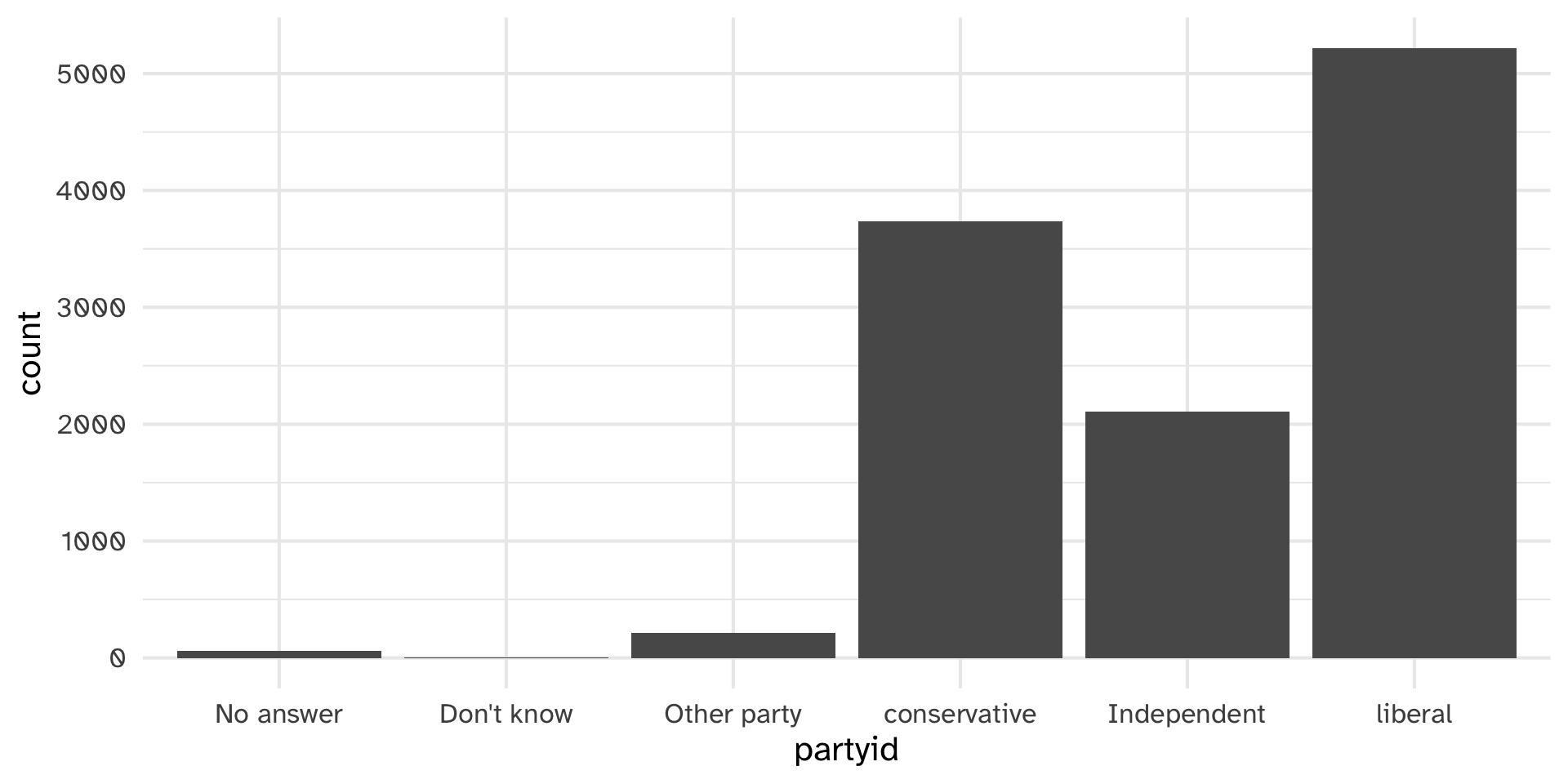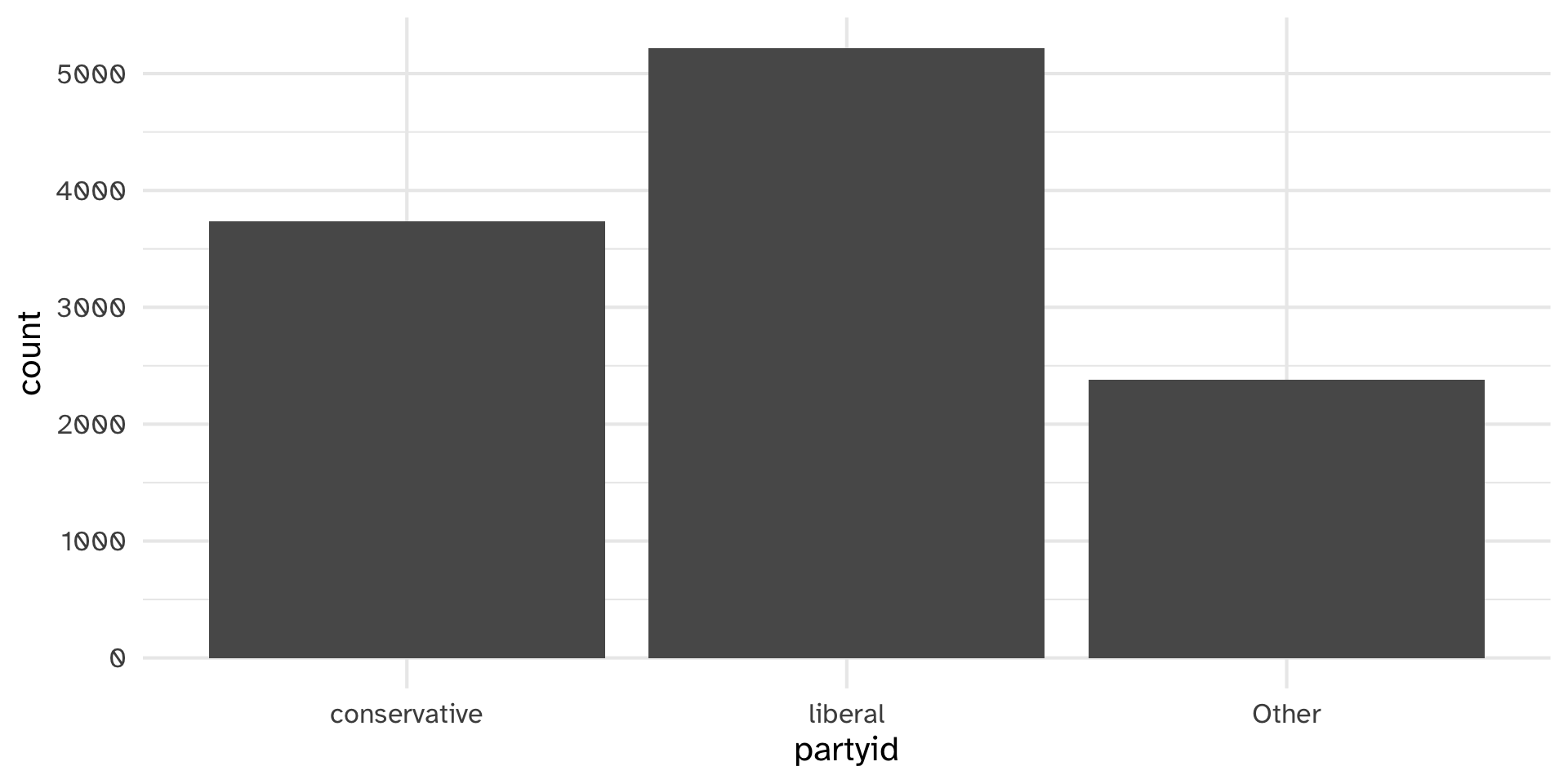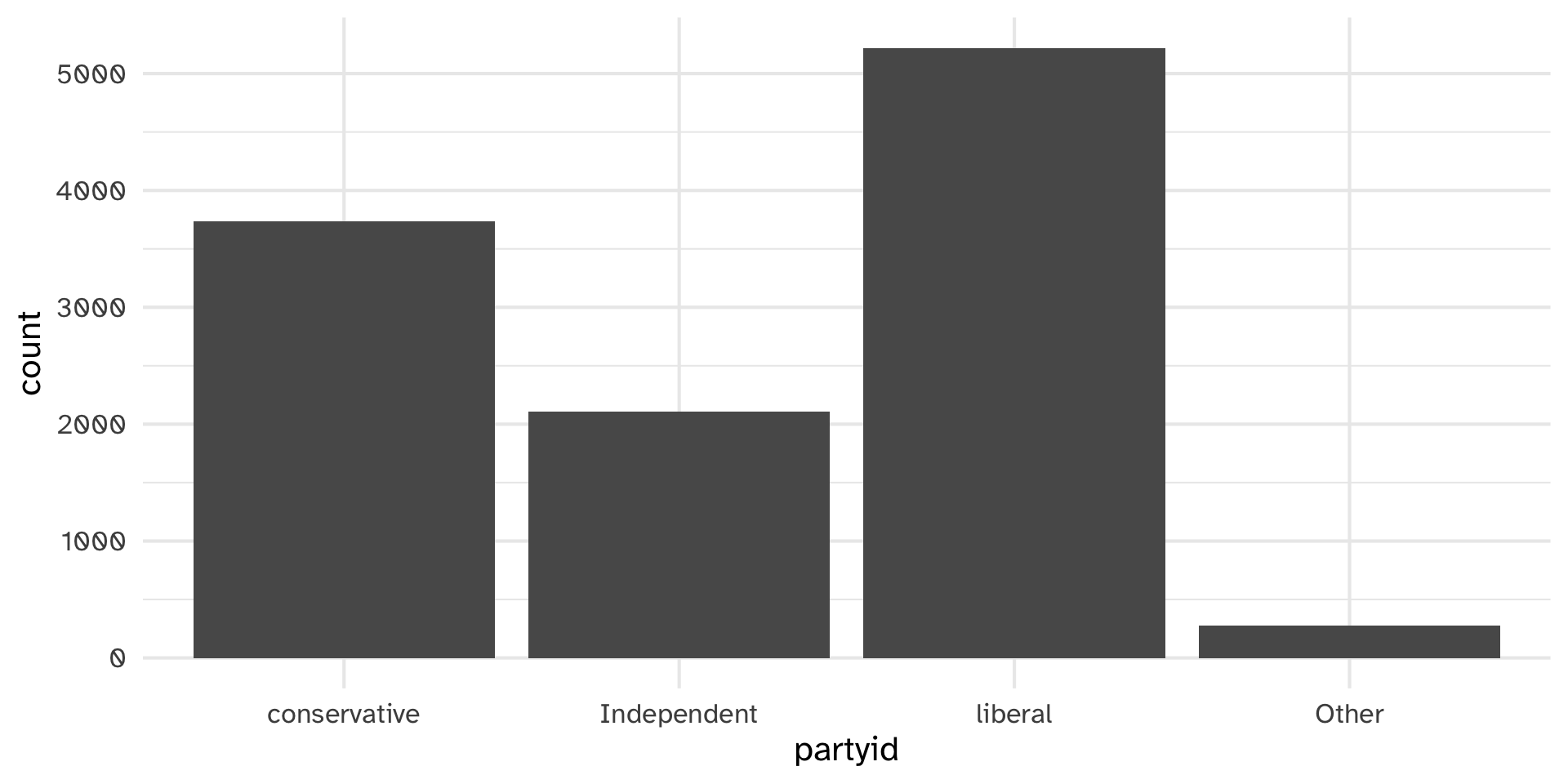# A tibble: 1,351 × 29
version version_season season_name season full_name castaway_id castaway
<fct> <chr> <chr> <dbl> <chr> <chr> <chr>
1 US US01 Survivor: Borneo 1 Sonja Ch… US0001 Sonja
2 US US01 Survivor: Borneo 1 B.B. And… US0002 B.B.
3 US US01 Survivor: Borneo 1 Stacey S… US0003 Stacey
4 US US01 Survivor: Borneo 1 Ramona G… US0004 Ramona
5 US US01 Survivor: Borneo 1 Dirk Been US0005 Dirk
6 US US01 Survivor: Borneo 1 Joel Klug US0006 Joel
7 US US01 Survivor: Borneo 1 Gretchen… US0007 Gretchen
8 US US01 Survivor: Borneo 1 Greg Buis US0008 Greg
9 US US01 Survivor: Borneo 1 Jenna Le… US0009 Jenna
10 US US01 Survivor: Borneo 1 Gervase … US0010 Gervase
# ℹ 1,341 more rows
# ℹ 22 more variables: age <dbl>, city <chr>, state <chr>, episode <dbl>,
# day <dbl>, order <dbl>, result <chr>, place <dbl>, jury_status <chr>,
# original_tribe <chr>, jury <lgl>, finalist <lgl>, winner <lgl>,
# acknowledge <lgl>, ack_look <lgl>, ack_speak <lgl>, ack_gesture <lgl>,
# ack_smile <lgl>, ack_quote <chr>, ack_score <dbl>, jury1 <dbl>, jury2 <fct>Working with
Factors
Day 12
Carleton College
Stat 220 - Spring 2025
Survivor castaways data
Both of these are categorical variables
[1] "Survivor: Borneo" "Survivor: The Australian Outback"
[3] "Survivor: Africa" "Survivor: Marquesas"
[5] "Survivor: Thailand" "Survivor: The Amazon" Same graph, colored by the same categorical variable

Factors
R’s representation of categorical data. Consists of:
A set of values
An ordered set of valid levels
Factors
Stored as an integer vector with a levels attribute
gss_cat
A sample of data from the General Social Survey, a long-running US survey conducted by NORC at the University of Chicago.
# A tibble: 21,483 × 9
year marital age race rincome partyid relig denom tvhours
<int> <fct> <int> <fct> <fct> <fct> <fct> <fct> <int>
1 2000 Never married 26 White $8000 to 9999 Ind,near … Prot… Sout… 12
2 2000 Divorced 48 White $8000 to 9999 Not str r… Prot… Bapt… NA
3 2000 Widowed 67 White Not applicable Independe… Prot… No d… 2
4 2000 Never married 39 White Not applicable Ind,near … Orth… Not … 4
5 2000 Divorced 25 White Not applicable Not str d… None Not … 1
6 2000 Married 25 White $20000 - 24999 Strong de… Prot… Sout… NA
7 2000 Never married 36 White $25000 or more Not str r… Chri… Not … 3
8 2000 Divorced 44 White $7000 to 7999 Ind,near … Prot… Luth… NA
9 2000 Married 44 White $25000 or more Not str d… Prot… Other 0
10 2000 Married 47 White $25000 or more Strong re… Prot… Sout… 3
# ℹ 21,473 more rowsWarm up
Use gss_cat to answer the following questions.
Which religions watch the least TV?
Do married people watch more or less TV than single people?
04:00
Which religions watch the least TV?
# A tibble: 21,483 × 9
year marital age race rincome partyid relig denom tvhours
<int> <fct> <int> <fct> <fct> <fct> <fct> <fct> <int>
1 2000 Never married 26 White $8000 to 9999 Ind,near … Prot… Sout… 12
2 2000 Divorced 48 White $8000 to 9999 Not str r… Prot… Bapt… NA
3 2000 Widowed 67 White Not applicable Independe… Prot… No d… 2
4 2000 Never married 39 White Not applicable Ind,near … Orth… Not … 4
5 2000 Divorced 25 White Not applicable Not str d… None Not … 1
6 2000 Married 25 White $20000 - 24999 Strong de… Prot… Sout… NA
7 2000 Never married 36 White $25000 or more Not str r… Chri… Not … 3
8 2000 Divorced 44 White $7000 to 7999 Ind,near … Prot… Luth… NA
9 2000 Married 44 White $25000 or more Not str d… Prot… Other 0
10 2000 Married 47 White $25000 or more Strong re… Prot… Sout… 3
# ℹ 21,473 more rowsWhich religions watch the least TV?
# A tibble: 11,337 × 9
year marital age race rincome partyid relig denom tvhours
<int> <fct> <int> <fct> <fct> <fct> <fct> <fct> <int>
1 2000 Never married 26 White $8000 to 9999 Ind,near … Prot… Sout… 12
2 2000 Widowed 67 White Not applicable Independe… Prot… No d… 2
3 2000 Never married 39 White Not applicable Ind,near … Orth… Not … 4
4 2000 Divorced 25 White Not applicable Not str d… None Not … 1
5 2000 Never married 36 White $25000 or more Not str r… Chri… Not … 3
6 2000 Married 44 White $25000 or more Not str d… Prot… Other 0
7 2000 Married 47 White $25000 or more Strong re… Prot… Sout… 3
8 2000 Married 53 White $25000 or more Not str d… Prot… Other 2
9 2000 Married 52 White $25000 or more Strong de… Prot… Sout… 1
10 2000 Divorced 52 White $25000 or more Ind,near … None Not … 1
# ℹ 11,327 more rowsWhich religions watch the least TV?
# A tibble: 11,337 × 9
# Groups: relig [15]
year marital age race rincome partyid relig denom tvhours
<int> <fct> <int> <fct> <fct> <fct> <fct> <fct> <int>
1 2000 Never married 26 White $8000 to 9999 Ind,near … Prot… Sout… 12
2 2000 Widowed 67 White Not applicable Independe… Prot… No d… 2
3 2000 Never married 39 White Not applicable Ind,near … Orth… Not … 4
4 2000 Divorced 25 White Not applicable Not str d… None Not … 1
5 2000 Never married 36 White $25000 or more Not str r… Chri… Not … 3
6 2000 Married 44 White $25000 or more Not str d… Prot… Other 0
7 2000 Married 47 White $25000 or more Strong re… Prot… Sout… 3
8 2000 Married 53 White $25000 or more Not str d… Prot… Other 2
9 2000 Married 52 White $25000 or more Strong de… Prot… Sout… 1
10 2000 Divorced 52 White $25000 or more Ind,near … None Not … 1
# ℹ 11,327 more rowsWhich religions watch the least TV?
# A tibble: 15 × 2
relig tvhours
<fct> <dbl>
1 No answer 2.72
2 Don't know 4.62
3 Inter-nondenominational 2.87
4 Native american 3.46
5 Christian 2.79
6 Orthodox-christian 2.42
7 Moslem/islam 2.44
8 Other eastern 1.67
9 Hinduism 1.89
10 Buddhism 2.38
11 Other 2.73
12 None 2.71
13 Jewish 2.52
14 Catholic 2.96
15 Protestant 3.15Which religions watch the least TV?
Which religions watch the least TV?
Which do you prefer?

Why is the y-axis in this order?

levels()
Use levels() to access a factor’s levels
Most useful factor skills:
1. Reorder the levels
2. Recode the levels
3. Collapse levels
fct_reorder
Reorder relig by tvhours
Reorder relig by tvhours
Try it
Use rincome_summary to construct a dotplot of rincome against age.
Reorder rincome by age
02:30
Which do you prefer?
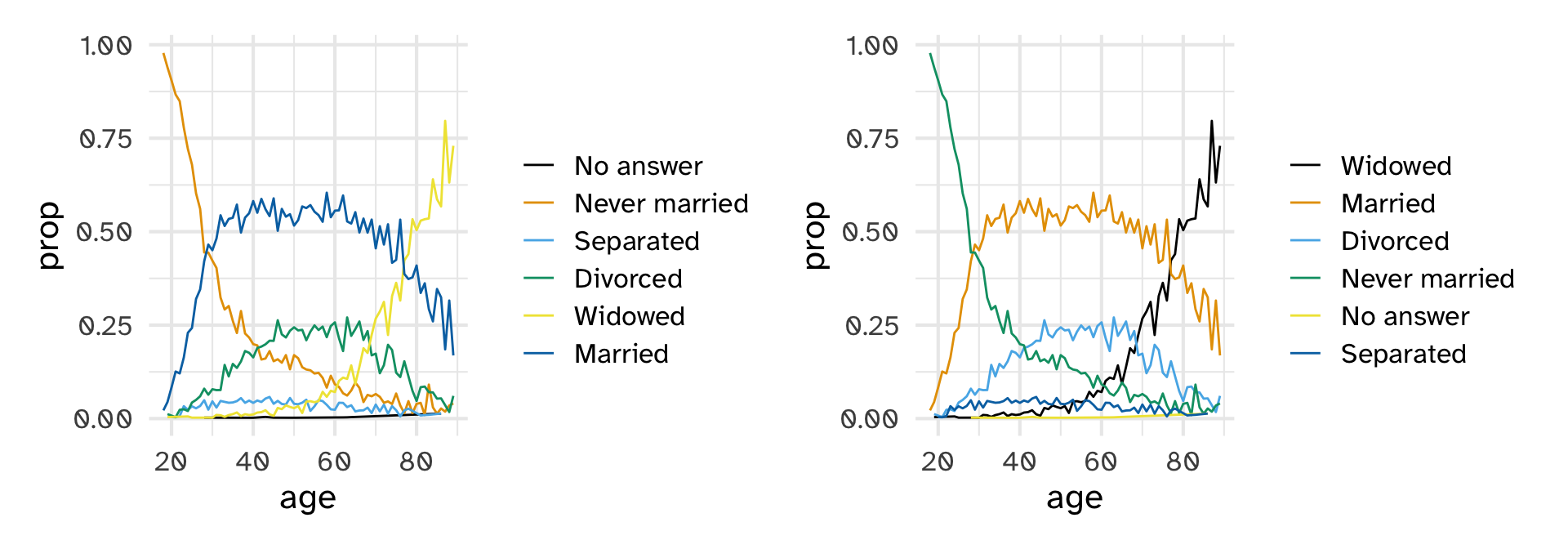
fct_reorder2
Reorders the levels of a factor by the Y values associated with the largest X values.
Reorder marital
Reorder marital
Other reordering functions
Other reordering functions
Other reordering functions
Which political leaning watches more TV?

How could we improve the partyid labels?
fct_recode
Changes values of levels
Recoding partyid
# A tibble: 21,483 × 9
year marital age race rincome partyid relig denom tvhours
<int> <fct> <int> <fct> <fct> <fct> <fct> <fct> <int>
1 2000 Never married 26 White $8000 to 9999 Ind,near … Prot… Sout… 12
2 2000 Divorced 48 White $8000 to 9999 Not str r… Prot… Bapt… NA
3 2000 Widowed 67 White Not applicable Independe… Prot… No d… 2
4 2000 Never married 39 White Not applicable Ind,near … Orth… Not … 4
5 2000 Divorced 25 White Not applicable Not str d… None Not … 1
6 2000 Married 25 White $20000 - 24999 Strong de… Prot… Sout… NA
7 2000 Never married 36 White $25000 or more Not str r… Chri… Not … 3
8 2000 Divorced 44 White $7000 to 7999 Ind,near … Prot… Luth… NA
9 2000 Married 44 White $25000 or more Not str d… Prot… Other 0
10 2000 Married 47 White $25000 or more Strong re… Prot… Sout… 3
# ℹ 21,473 more rowsRecoding partyid
# A tibble: 11,337 × 9
year marital age race rincome partyid relig denom tvhours
<int> <fct> <int> <fct> <fct> <fct> <fct> <fct> <int>
1 2000 Never married 26 White $8000 to 9999 Ind,near … Prot… Sout… 12
2 2000 Widowed 67 White Not applicable Independe… Prot… No d… 2
3 2000 Never married 39 White Not applicable Ind,near … Orth… Not … 4
4 2000 Divorced 25 White Not applicable Not str d… None Not … 1
5 2000 Never married 36 White $25000 or more Not str r… Chri… Not … 3
6 2000 Married 44 White $25000 or more Not str d… Prot… Other 0
7 2000 Married 47 White $25000 or more Strong re… Prot… Sout… 3
8 2000 Married 53 White $25000 or more Not str d… Prot… Other 2
9 2000 Married 52 White $25000 or more Strong de… Prot… Sout… 1
10 2000 Divorced 52 White $25000 or more Ind,near … None Not … 1
# ℹ 11,327 more rowsRecoding partyid
# A tibble: 11,337 × 2
partyid tvhours
<fct> <int>
1 Ind,near rep 12
2 Independent 2
3 Ind,near rep 4
4 Not str democrat 1
5 Not str republican 3
6 Not str democrat 0
7 Strong republican 3
8 Not str democrat 2
9 Strong democrat 1
10 Ind,near dem 1
# ℹ 11,327 more rowsRecoding partyid
gss_cat %>%
drop_na(tvhours) %>%
select(partyid, tvhours) %>%
mutate(partyid = fct_recode(partyid,
"Republican, strong" = "Strong republican",
"Republican, weak" = "Not str republican",
"Independent, near rep" = "Ind,near rep",
"Independent, near dem" = "Ind,near dem",
"Democrat, weak" = "Not str democrat",
"Democrat, strong" = "Strong democrat"))# A tibble: 11,337 × 2
partyid tvhours
<fct> <int>
1 Independent, near rep 12
2 Independent 2
3 Independent, near rep 4
4 Democrat, weak 1
5 Republican, weak 3
6 Democrat, weak 0
7 Republican, strong 3
8 Democrat, weak 2
9 Democrat, strong 1
10 Independent, near dem 1
# ℹ 11,327 more rowsRecoding partyid
gss_cat %>%
drop_na(tvhours) %>%
select(partyid, tvhours) %>%
mutate(partyid = fct_recode(partyid,
"Republican, strong" = "Strong republican",
"Republican, weak" = "Not str republican",
"Independent, near rep" = "Ind,near rep",
"Independent, near dem" = "Ind,near dem",
"Democrat, weak" = "Not str democrat",
"Democrat, strong" = "Strong democrat")) %>%
group_by(partyid)# A tibble: 11,337 × 2
# Groups: partyid [10]
partyid tvhours
<fct> <int>
1 Independent, near rep 12
2 Independent 2
3 Independent, near rep 4
4 Democrat, weak 1
5 Republican, weak 3
6 Democrat, weak 0
7 Republican, strong 3
8 Democrat, weak 2
9 Democrat, strong 1
10 Independent, near dem 1
# ℹ 11,327 more rowsRecoding partyid
gss_cat %>%
drop_na(tvhours) %>%
select(partyid, tvhours) %>%
mutate(partyid = fct_recode(partyid,
"Republican, strong" = "Strong republican",
"Republican, weak" = "Not str republican",
"Independent, near rep" = "Ind,near rep",
"Independent, near dem" = "Ind,near dem",
"Democrat, weak" = "Not str democrat",
"Democrat, strong" = "Strong democrat")) %>%
group_by(partyid) %>%
summarize(tvhours = mean(tvhours))# A tibble: 10 × 2
partyid tvhours
<fct> <dbl>
1 No answer 3.22
2 Don't know 2
3 Other party 2.79
4 Republican, strong 2.72
5 Republican, weak 2.63
6 Independent, near rep 2.77
7 Independent 3.08
8 Independent, near dem 2.80
9 Democrat, weak 3.04
10 Democrat, strong 3.52Recoding partyid
gss_cat %>%
drop_na(tvhours) %>%
select(partyid, tvhours) %>%
mutate(partyid = fct_recode(partyid,
"Republican, strong" = "Strong republican",
"Republican, weak" = "Not str republican",
"Independent, near rep" = "Ind,near rep",
"Independent, near dem" = "Ind,near dem",
"Democrat, weak" = "Not str democrat",
"Democrat, strong" = "Strong democrat")) %>%
group_by(partyid) %>%
summarize(tvhours = mean(tvhours)) %>%
ggplot(aes(tvhours, fct_reorder(partyid, tvhours)))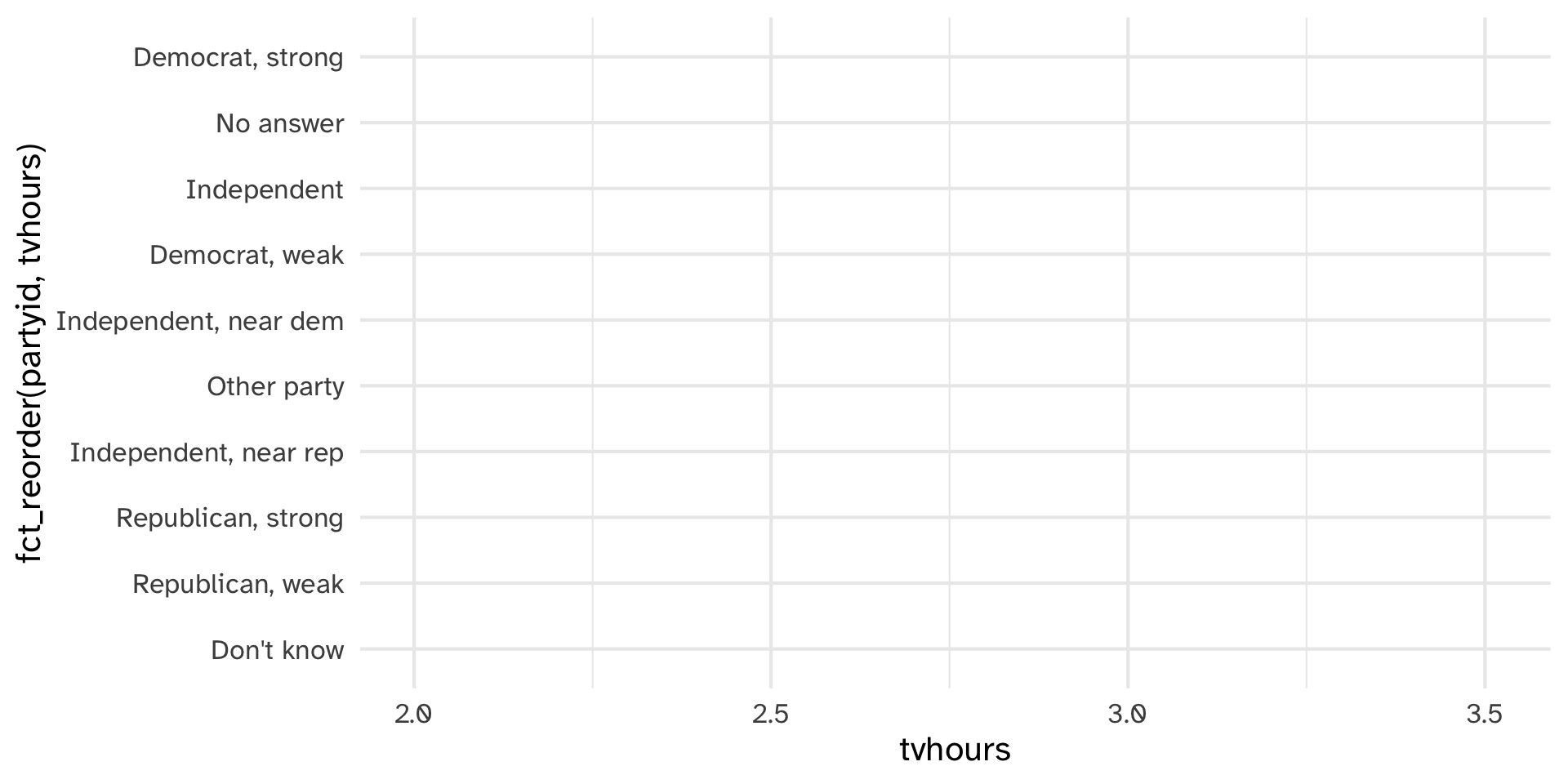
Recoding partyid
gss_cat %>%
drop_na(tvhours) %>%
select(partyid, tvhours) %>%
mutate(partyid = fct_recode(partyid,
"Republican, strong" = "Strong republican",
"Republican, weak" = "Not str republican",
"Independent, near rep" = "Ind,near rep",
"Independent, near dem" = "Ind,near dem",
"Democrat, weak" = "Not str democrat",
"Democrat, strong" = "Strong democrat")) %>%
group_by(partyid) %>%
summarize(tvhours = mean(tvhours)) %>%
ggplot(aes(tvhours, fct_reorder(partyid, tvhours))) +
geom_point()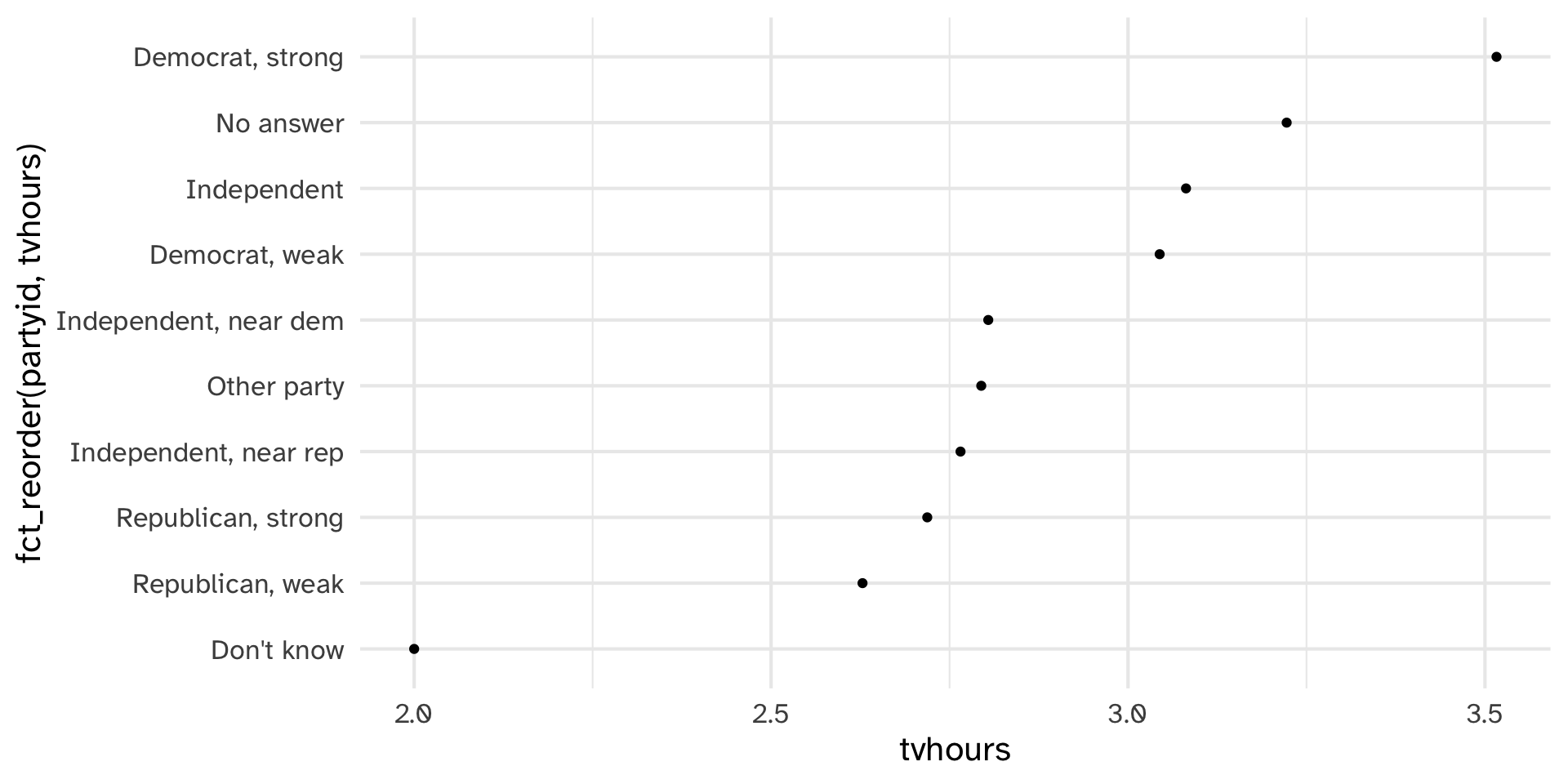
Recoding partyid
gss_cat %>%
drop_na(tvhours) %>%
select(partyid, tvhours) %>%
mutate(partyid = fct_recode(partyid,
"Republican, strong" = "Strong republican",
"Republican, weak" = "Not str republican",
"Independent, near rep" = "Ind,near rep",
"Independent, near dem" = "Ind,near dem",
"Democrat, weak" = "Not str democrat",
"Democrat, strong" = "Strong democrat")) %>%
group_by(partyid) %>%
summarize(tvhours = mean(tvhours)) %>%
ggplot(aes(tvhours, fct_reorder(partyid, tvhours))) +
geom_point() +
labs(y = "partyid")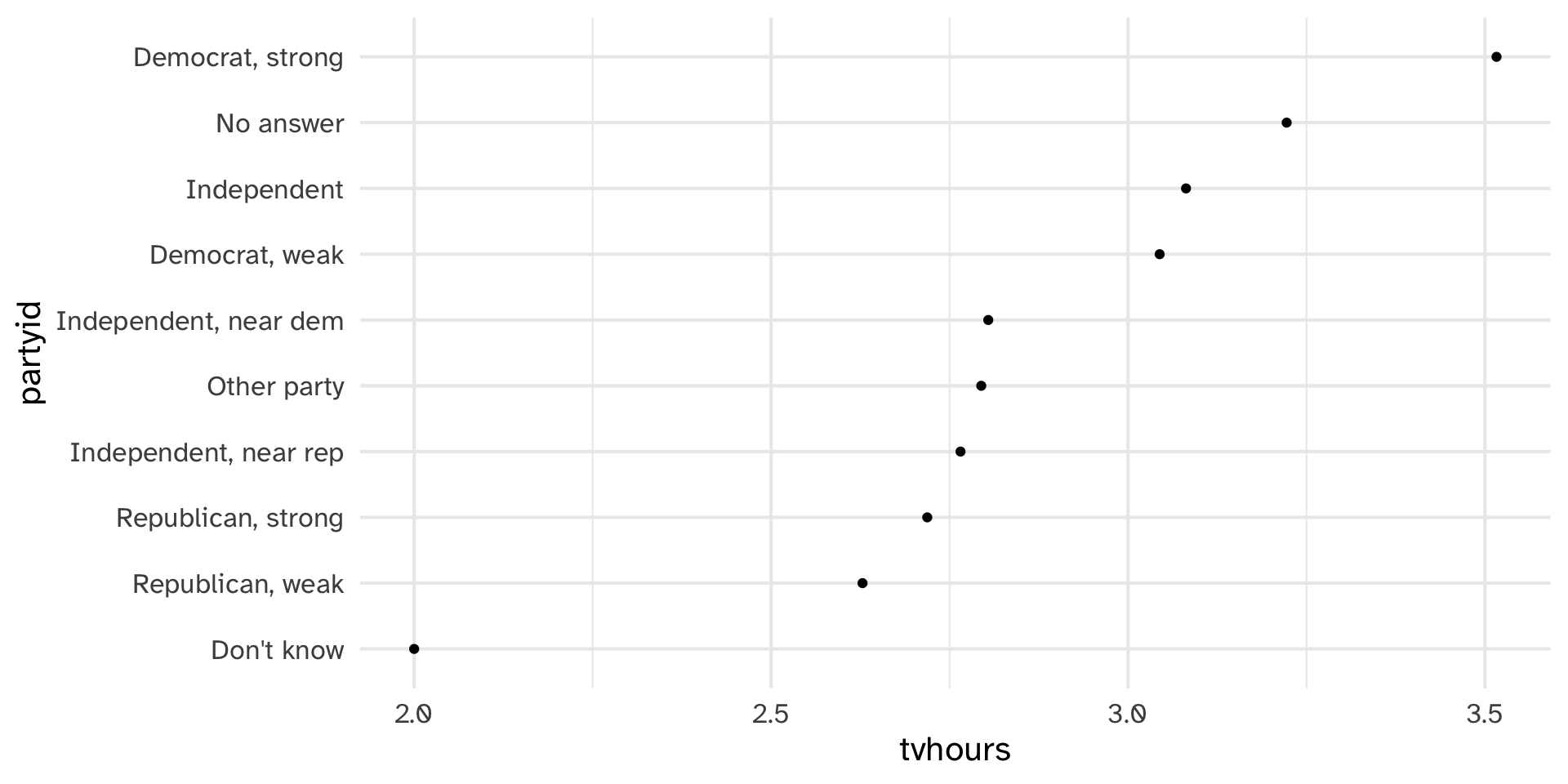
How can we combine these factor levels?

fct_collapse()
Changes multiple levels into single levels
Collapsing partyid
# A tibble: 21,483 × 9
year marital age race rincome partyid relig denom tvhours
<int> <fct> <int> <fct> <fct> <fct> <fct> <fct> <int>
1 2000 Never married 26 White $8000 to 9999 Ind,near … Prot… Sout… 12
2 2000 Divorced 48 White $8000 to 9999 Not str r… Prot… Bapt… NA
3 2000 Widowed 67 White Not applicable Independe… Prot… No d… 2
4 2000 Never married 39 White Not applicable Ind,near … Orth… Not … 4
5 2000 Divorced 25 White Not applicable Not str d… None Not … 1
6 2000 Married 25 White $20000 - 24999 Strong de… Prot… Sout… NA
7 2000 Never married 36 White $25000 or more Not str r… Chri… Not … 3
8 2000 Divorced 44 White $7000 to 7999 Ind,near … Prot… Luth… NA
9 2000 Married 44 White $25000 or more Not str d… Prot… Other 0
10 2000 Married 47 White $25000 or more Strong re… Prot… Sout… 3
# ℹ 21,473 more rowsCollapsing partyid
# A tibble: 11,337 × 9
year marital age race rincome partyid relig denom tvhours
<int> <fct> <int> <fct> <fct> <fct> <fct> <fct> <int>
1 2000 Never married 26 White $8000 to 9999 Ind,near … Prot… Sout… 12
2 2000 Widowed 67 White Not applicable Independe… Prot… No d… 2
3 2000 Never married 39 White Not applicable Ind,near … Orth… Not … 4
4 2000 Divorced 25 White Not applicable Not str d… None Not … 1
5 2000 Never married 36 White $25000 or more Not str r… Chri… Not … 3
6 2000 Married 44 White $25000 or more Not str d… Prot… Other 0
7 2000 Married 47 White $25000 or more Strong re… Prot… Sout… 3
8 2000 Married 53 White $25000 or more Not str d… Prot… Other 2
9 2000 Married 52 White $25000 or more Strong de… Prot… Sout… 1
10 2000 Divorced 52 White $25000 or more Ind,near … None Not … 1
# ℹ 11,327 more rowsCollapsing partyid
# A tibble: 11,337 × 2
partyid tvhours
<fct> <int>
1 Ind,near rep 12
2 Independent 2
3 Ind,near rep 4
4 Not str democrat 1
5 Not str republican 3
6 Not str democrat 0
7 Strong republican 3
8 Not str democrat 2
9 Strong democrat 1
10 Ind,near dem 1
# ℹ 11,327 more rowsCollapsing partyid
# A tibble: 11,337 × 2
partyid tvhours
<fct> <int>
1 conservative 12
2 Independent 2
3 conservative 4
4 liberal 1
5 conservative 3
6 liberal 0
7 conservative 3
8 liberal 2
9 liberal 1
10 liberal 1
# ℹ 11,327 more rowsCollapsing partyid
# A tibble: 11,337 × 2
# Groups: partyid [6]
partyid tvhours
<fct> <int>
1 conservative 12
2 Independent 2
3 conservative 4
4 liberal 1
5 conservative 3
6 liberal 0
7 conservative 3
8 liberal 2
9 liberal 1
10 liberal 1
# ℹ 11,327 more rowsCollapsing partyid
gss_cat %>%
drop_na(tvhours) %>%
select(partyid, tvhours) %>%
mutate(
partyid =
fct_collapse(
partyid,
conservative = c("Strong republican",
"Not str republican",
"Ind,near rep"),
liberal = c("Strong democrat",
"Not str democrat",
"Ind,near dem"))
) %>%
group_by(partyid) %>%
summarize(tvhours = mean(tvhours))# A tibble: 6 × 2
partyid tvhours
<fct> <dbl>
1 No answer 3.22
2 Don't know 2
3 Other party 2.79
4 conservative 2.69
5 Independent 3.08
6 liberal 3.15Collapsing partyid
gss_cat %>%
drop_na(tvhours) %>%
select(partyid, tvhours) %>%
mutate(
partyid =
fct_collapse(
partyid,
conservative = c("Strong republican",
"Not str republican",
"Ind,near rep"),
liberal = c("Strong democrat",
"Not str democrat",
"Ind,near dem"))
) %>%
group_by(partyid) %>%
summarize(tvhours = mean(tvhours)) %>%
ggplot(aes(tvhours, fct_reorder(partyid, tvhours)))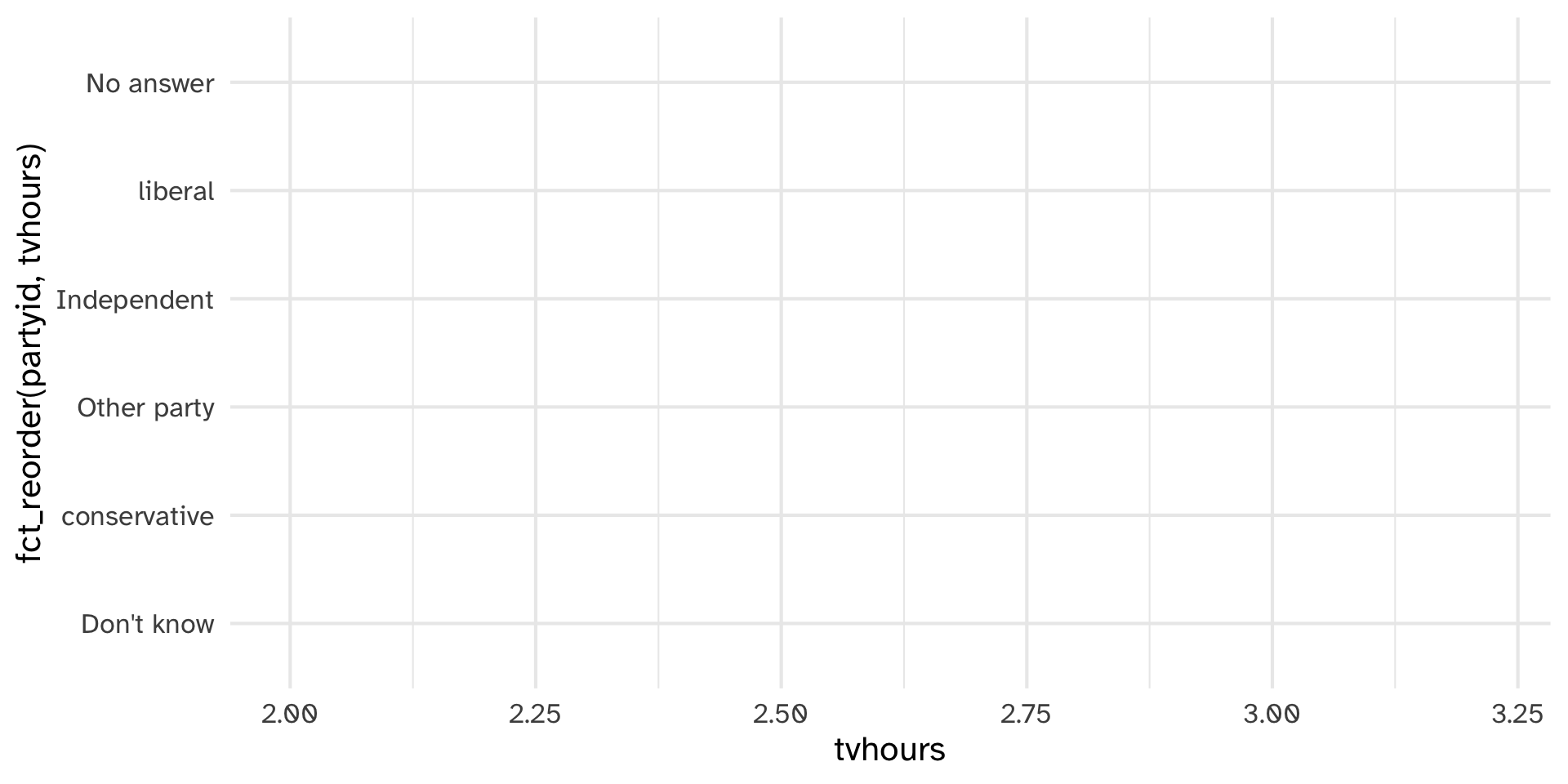
Collapsing partyid
gss_cat %>%
drop_na(tvhours) %>%
select(partyid, tvhours) %>%
mutate(
partyid =
fct_collapse(
partyid,
conservative = c("Strong republican",
"Not str republican",
"Ind,near rep"),
liberal = c("Strong democrat",
"Not str democrat",
"Ind,near dem"))
) %>%
group_by(partyid) %>%
summarize(tvhours = mean(tvhours)) %>%
ggplot(aes(tvhours, fct_reorder(partyid, tvhours))) +
geom_point()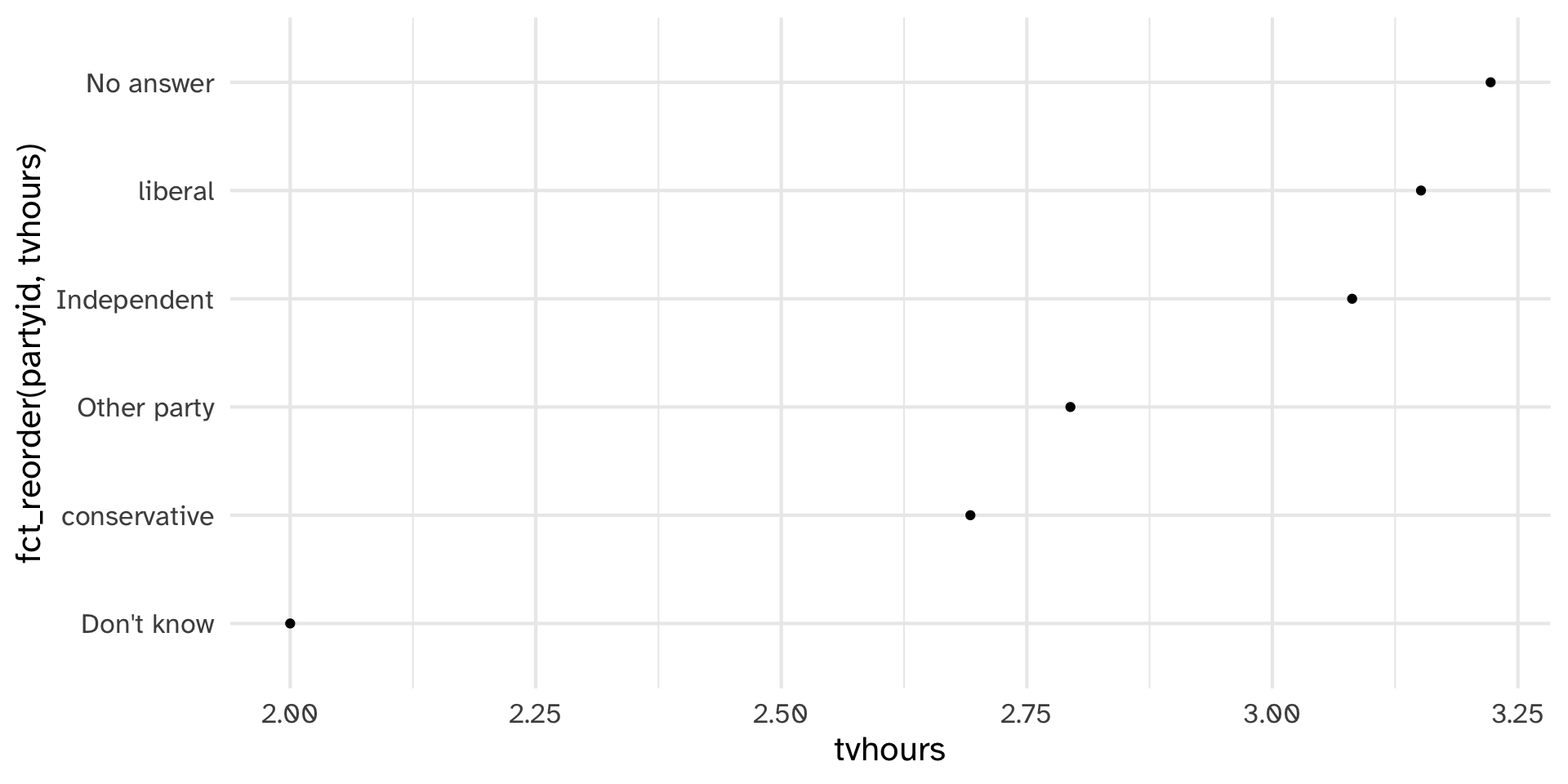
Collapsing partyid
gss_cat %>%
drop_na(tvhours) %>%
select(partyid, tvhours) %>%
mutate(
partyid =
fct_collapse(
partyid,
conservative = c("Strong republican",
"Not str republican",
"Ind,near rep"),
liberal = c("Strong democrat",
"Not str democrat",
"Ind,near dem"))
) %>%
group_by(partyid) %>%
summarize(tvhours = mean(tvhours)) %>%
ggplot(aes(tvhours, fct_reorder(partyid, tvhours))) +
geom_point() +
labs(y = "partyid")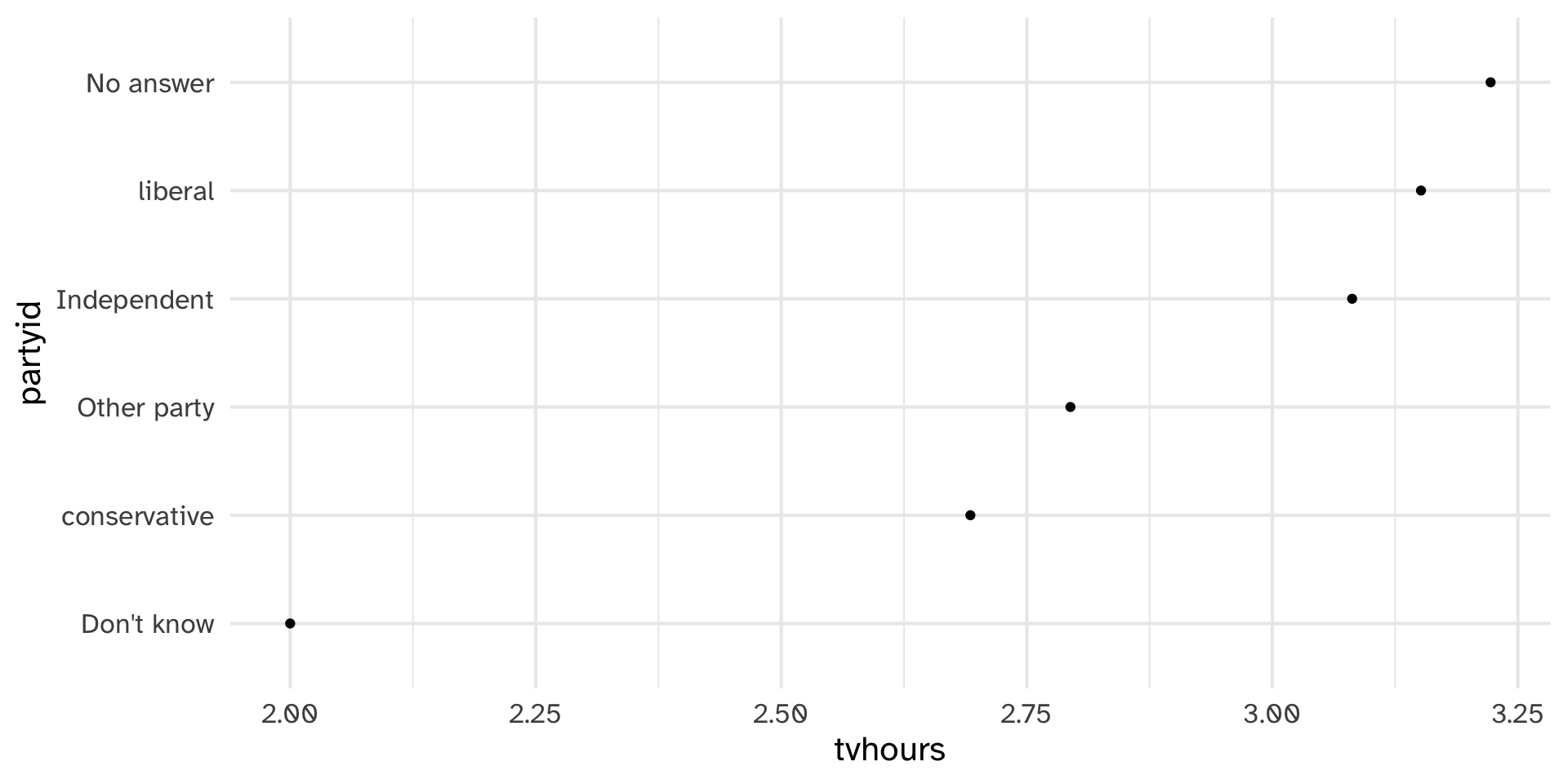
Your turn
Collapse the marital variable to have levels Married, Not married, and No answer
Include "Never married", "Divorced", and “Widowed" in Not married
02:00
There are relatively few points in each of these groups

There are relatively few points in each of these groups

fct_lump()
Collapses levels with fewest values into a single level.
By default collapses as many levels as possible such that the new level is still the smallest.
Lumping parytid
Lumping parytid
Lumping parytid
Your turn: hotel bookings
The remainder of the activity file has you fixing up some plots using hotel bookings data from Tidy Tuesday


